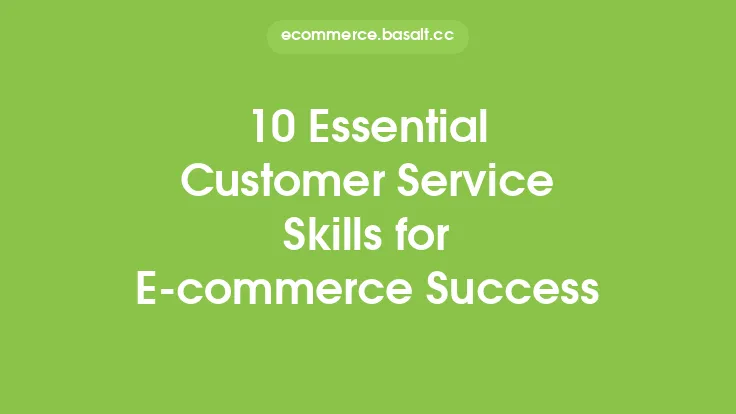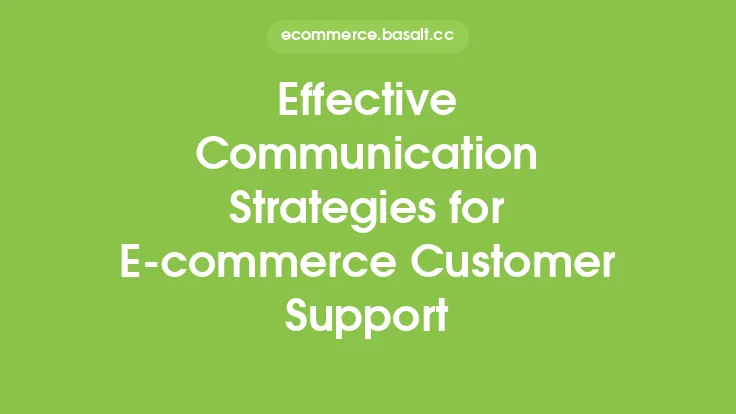Customer journey mapping is a crucial tool for e-commerce businesses to understand and improve the experiences of their customers. It involves creating a visual representation of the customer's journey, from the initial awareness stage to the post-purchase stage, highlighting all the touchpoints and interactions they have with the brand. By mapping out the customer journey, e-commerce businesses can identify pain points, areas of improvement, and opportunities to enhance the overall customer experience.
What is Customer Journey Mapping?
Customer journey mapping is a strategic approach to understanding the customer's perspective and behavior throughout their interaction with a brand. It involves gathering data and insights about the customer's thoughts, feelings, and actions at each stage of the journey, from awareness and consideration to purchase and retention. The goal of customer journey mapping is to create a comprehensive and accurate picture of the customer's experience, highlighting both positive and negative interactions.
Benefits of Customer Journey Mapping
Customer journey mapping offers numerous benefits for e-commerce businesses, including:
- Improved customer satisfaction: By understanding the customer's needs and pain points, businesses can make targeted improvements to enhance the overall experience.
- Increased loyalty: By providing a seamless and personalized experience, businesses can build strong relationships with their customers, leading to increased loyalty and retention.
- Enhanced customer engagement: Customer journey mapping helps businesses identify opportunities to engage with customers at each stage of the journey, improving the overall experience and driving conversions.
- Competitive advantage: By prioritizing the customer experience, businesses can differentiate themselves from competitors and establish a unique value proposition.
Key Components of Customer Journey Mapping
A customer journey map typically includes the following key components:
- Customer personas: A detailed description of the target customer, including demographics, behaviors, and preferences.
- Touchpoints: A list of all the interactions the customer has with the brand, including website visits, social media interactions, email communications, and customer support interactions.
- Emotions and pain points: A description of the customer's emotions and pain points at each stage of the journey, highlighting areas of frustration and opportunity.
- Actions and behaviors: A description of the customer's actions and behaviors at each stage of the journey, including purchasing decisions and post-purchase interactions.
How to Create a Customer Journey Map
Creating a customer journey map involves the following steps:
- Conduct customer research: Gather data and insights about the customer's thoughts, feelings, and behaviors through surveys, interviews, and focus groups.
- Identify customer personas: Develop detailed descriptions of the target customer, including demographics, behaviors, and preferences.
- Map out the customer journey: Create a visual representation of the customer's journey, highlighting all the touchpoints and interactions they have with the brand.
- Identify pain points and opportunities: Analyze the customer journey map to identify areas of improvement and opportunities to enhance the overall experience.
Best Practices for Customer Journey Mapping
To get the most out of customer journey mapping, e-commerce businesses should follow these best practices:
- Keep it customer-centric: Focus on the customer's needs and perspectives, rather than internal business goals and objectives.
- Make it visual: Use visual representations, such as diagrams and flowcharts, to illustrate the customer journey and make it easier to understand.
- Keep it simple: Avoid complexity and focus on the most critical touchpoints and interactions.
- Make it actionable: Use the customer journey map to inform business decisions and drive improvements to the customer experience.
Common Challenges and Pitfalls
Customer journey mapping is not without its challenges and pitfalls. Common issues include:
- Lack of data and insights: Without accurate and comprehensive data, customer journey maps can be incomplete or inaccurate.
- Internal silos: Customer journey mapping often requires collaboration across multiple departments and teams, which can be challenging in organizations with internal silos.
- Limited resources: Creating and maintaining a customer journey map can require significant resources, including time, budget, and personnel.
Future of Customer Journey Mapping
The future of customer journey mapping is likely to involve increased use of technology and data analytics to create more accurate and dynamic maps. Emerging trends include:
- Use of artificial intelligence and machine learning: To analyze customer data and create more personalized and predictive journey maps.
- Integration with other business tools: To create a more seamless and integrated customer experience.
- Focus on emotional and social aspects: To better understand the customer's emotional and social needs and create more empathetic and human-centered journey maps.
Conclusion
Customer journey mapping is a powerful tool for e-commerce businesses to understand and improve the experiences of their customers. By creating a visual representation of the customer's journey, businesses can identify pain points, areas of improvement, and opportunities to enhance the overall experience. By following best practices and avoiding common challenges and pitfalls, businesses can create effective customer journey maps that drive business success and customer loyalty. As the e-commerce landscape continues to evolve, customer journey mapping will remain a critical component of any successful customer experience strategy.





